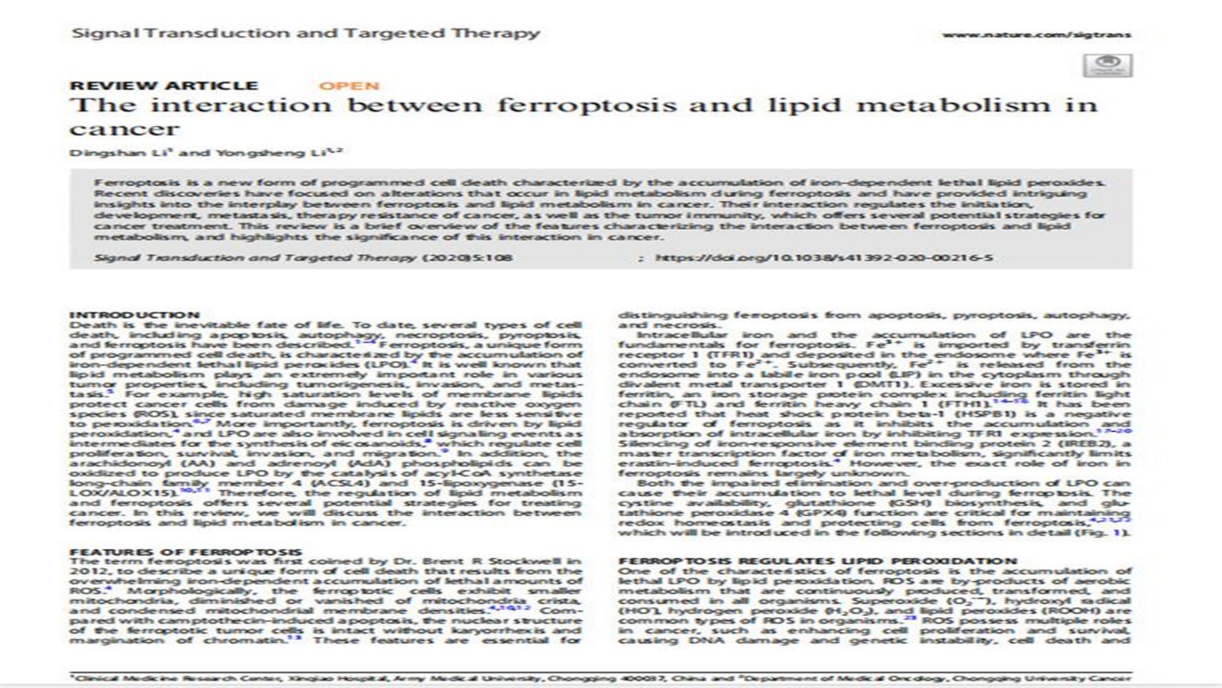Recently, the team of Professor Li Yongsheng from the Department of Oncology, Chongqing University Cancer Hospital published a review article. This review is a brief overview of the features characterizing the interaction between ferroptosis and lipid metabolism, and highlights the significance of this interaction in cancer. Their interaction regulates the initiation, development, metastasis, therapy resistance of cancer, as well as the tumor immunity, which offers several potential strategies for cancer treatment. The article also lists the clinical trials and preclinical drugs targeting ferroptosis for antitumor treatment.
The article was published in the international academic journal "Signal transduction and target therapy" (if = 13.5), entitled "The interaction between ferroptosis and lipid bolism in cancer".
Li Yongsheng is a returned scholar from Harvard Medical School in the United States, an overseas high-level talent from the Central Organization Department, and the head of the Immunometabolism Group of the Cancer Metabolism Committee of China Anti-Cancer Association. He has deep attainments in the field of lipid metabolism and tumor immunity.

Li Yongsheng introduced that Ferroptosis is a new form of programmed cell death characterized by the accumulation of iron-dependent lethal lipid peroxides.High saturation levels of membrane lipids protect cancer cells from damage induced by reactive oxygen species (ROS), since saturated membrane lipids are less sensitive to peroxidation.Recent studies showed that Lipid metabolism is closely related to cell sensitivity to ferroptosis via several pathways.
"Undoubtably, targeting the interaction between ferroptosis and lipid metabolism provides potential therapeutic strategies for cancer. The combination of inducing ferroptosis and blocking tumor immune escape may improve the efficacy of antitumor therapy in clinics." Li Yongsheng believes that this review provides an important literature reference for researchers engaged in research on ferroptosis and lipid metabolism, and indicates a new direction for antitumor therapy in clinics.
Li Yongsheng said the detailed underlying mechanisms driving ferroptosis awaits further exploration. We should address the specific markers for ferroptosis, the specific source and role of LPO in ferroptosis, as well as the exact interaction between ferroptosis and lipid metabolism in cancer.
